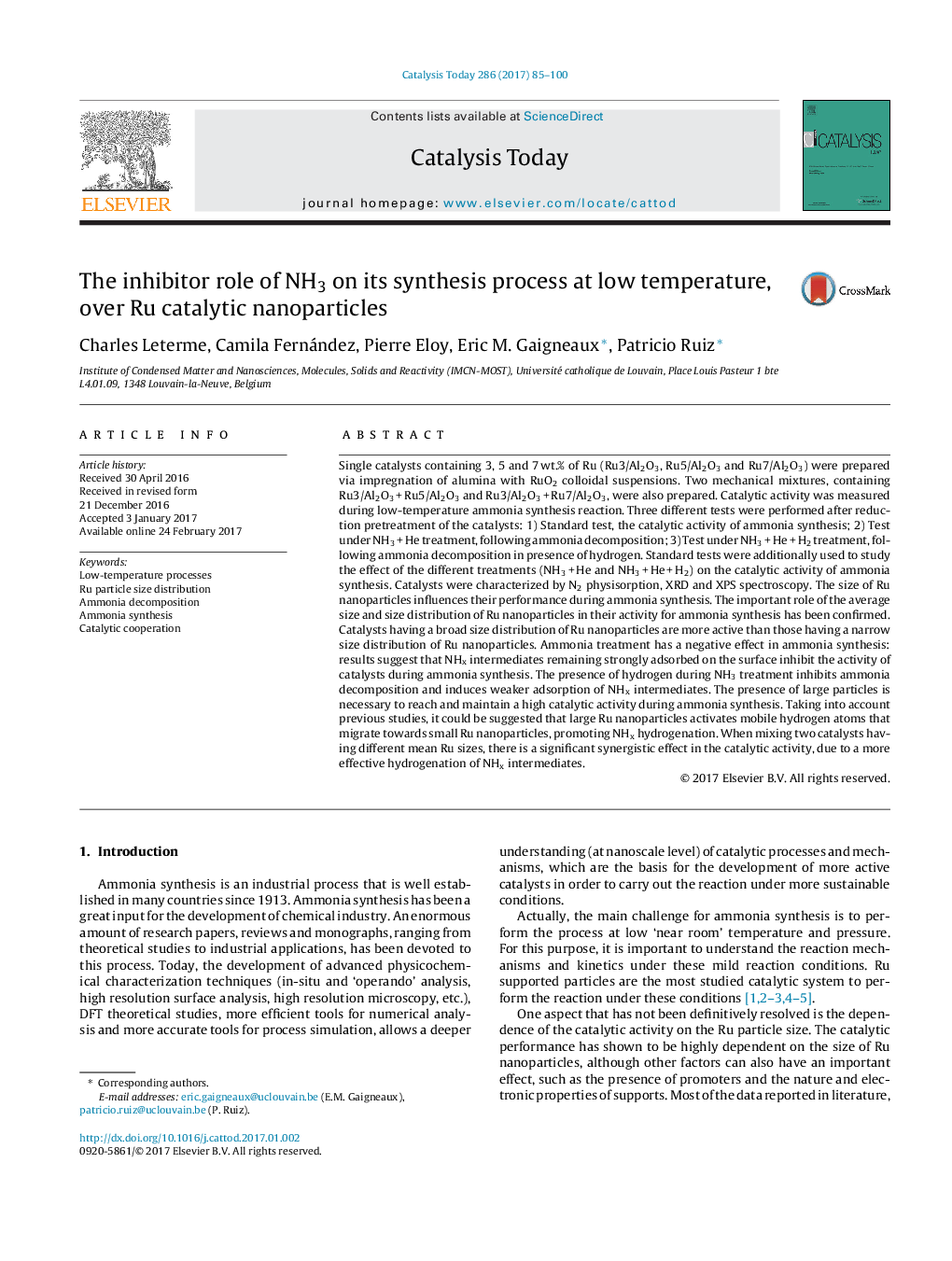| کد مقاله | کد نشریه | سال انتشار | مقاله انگلیسی | نسخه تمام متن |
|---|---|---|---|---|
| 6455300 | 1419169 | 2017 | 16 صفحه PDF | دانلود رایگان |

- Presence of ammonia has a negative effect in the ammonia synthesis.
- The size of Ru nanoparticles plays an important role in the decomposition of ammonia.
- The presence of large Ru particles is necessary to get and to maintain high activity.
Single catalysts containing 3, 5 and 7 wt.% of Ru (Ru3/Al2O3, Ru5/Al2O3 and Ru7/Al2O3) were prepared via impregnation of alumina with RuO2 colloidal suspensions. Two mechanical mixtures, containing Ru3/Al2O3 + Ru5/Al2O3 and Ru3/Al2O3 + Ru7/Al2O3, were also prepared. Catalytic activity was measured during low-temperature ammonia synthesis reaction. Three different tests were performed after reduction pretreatment of the catalysts: 1) Standard test, the catalytic activity of ammonia synthesis; 2) Test under NH3 + He treatment, following ammonia decomposition; 3) Test under NH3 + He + H2 treatment, following ammonia decomposition in presence of hydrogen. Standard tests were additionally used to study the effect of the different treatments (NH3 + He and NH3 + He + H2) on the catalytic activity of ammonia synthesis. Catalysts were characterized by N2 physisorption, XRD and XPS spectroscopy. The size of Ru nanoparticles influences their performance during ammonia synthesis. The important role of the average size and size distribution of Ru nanoparticles in their activity for ammonia synthesis has been confirmed. Catalysts having a broad size distribution of Ru nanoparticles are more active than those having a narrow size distribution of Ru nanoparticles. Ammonia treatment has a negative effect in ammonia synthesis: results suggest that NHx intermediates remaining strongly adsorbed on the surface inhibit the activity of catalysts during ammonia synthesis. The presence of hydrogen during NH3 treatment inhibits ammonia decomposition and induces weaker adsorption of NHx intermediates. The presence of large particles is necessary to reach and maintain a high catalytic activity during ammonia synthesis. Taking into account previous studies, it could be suggested that large Ru nanoparticles activates mobile hydrogen atoms that migrate towards small Ru nanoparticles, promoting NHx hydrogenation. When mixing two catalysts having different mean Ru sizes, there is a significant synergistic effect in the catalytic activity, due to a more effective hydrogenation of NHx intermediates.
130
Journal: Catalysis Today - Volume 286, 15 May 2017, Pages 85-100